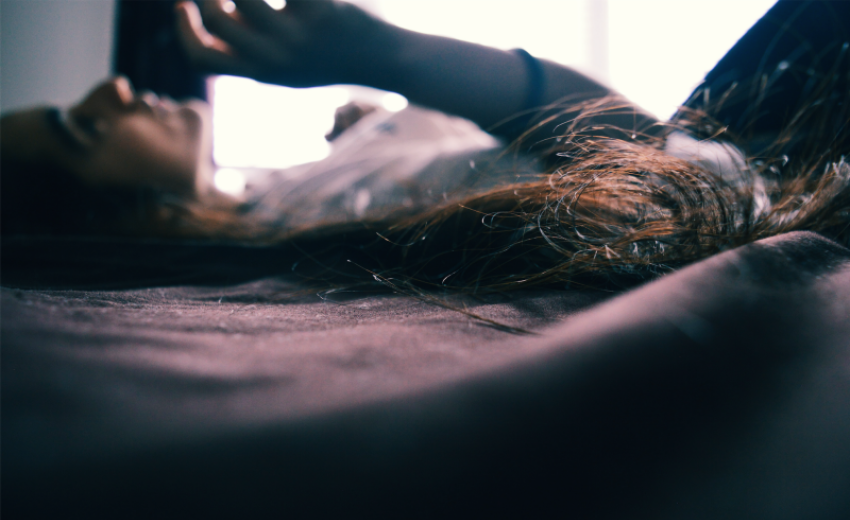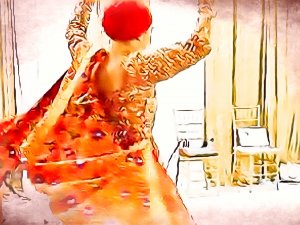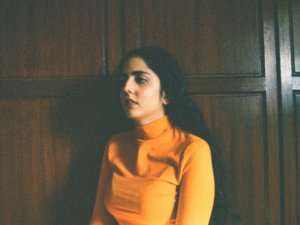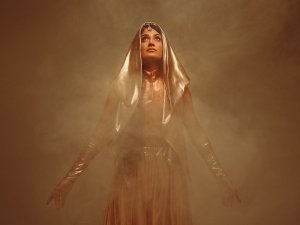“Did you see the hair on that chick’s face?” he says to his girlfriend, walking away.
She laughs. “Oh my god, that was so loud.”
“So?”
I can feel myself going red. Tears well up in my eyes. I try to blink them away. Suddenly. I realize that no one is going to make me feel humiliated. I leave work. I find him in the mall. I walk directly up to him and will myself to talk to him about my kes. We have a conversation that ends with him apologizing to me.
I wasn’t always the kind of person who would walk up to a person who had just tried to demean me. Nor was I always sure that I wanted to let the hair on my body grow. My journey towards embracing my kes was the furthest thing from a linear walk towards self-love. It didn’t begin with struggle and end with a fuzzy epiphany that I had officially overcome all the hurdles. Instead, it was more like traversing an unmarked path on a mountain. A path that I am still trying to carve out for my myself. A path that I know I don’t walk alone.
A beautiful aspect of the Sikh way of life is acceptance of divine will. One facet of this acceptance is the visible form of a kesdhari Sikh - a Sikh who chooses to keep all her hair intact. Amongst many reasons, kesdhari and amritdhari Sikhs maintain uncut hair as an act of acceptance and as a way of embracing the perfection of their natural form. But to say these words and to truly feel them are two entirely different things.
My interest in Sikhi was sparked at a very young age. Going to Sangat as a quiet, shy child filled me with something I had not felt elsewhere. In meditation, I found a sense of love and belonging that I would find myself struggling to articulate for years. Sikh stories of bravery and love filled me with a sense of hope: I was sure that there was something within me that was brighter than all the things around me that felt dark.
These positive childhood experiences with Sikhi. however, did not shelter me from my insecurities. In the summer after ninth grade. I challenged myself to let my facial hair remain visible. At the time, wasn’t a big deal because I was at home all summer long. But then we went on a trip. Willing myself to see what would happen if I didn’t bleach my hair. I went to Disneyland.
At first, I tried to tell myself that the looks I was getting were just a product of my imagination. The actions of a group of guys, however, made me accept that they were not. There I was: a fourteen-year-old Kaur trying my best to fearlessly accept my kes, when along came three grown men who felt entitled to stare me down and laugh. One of them pointed me out to his friends (when I say pointed. I mean he literally pointed) and then began talking about the hair on my face. He even gestured to the hair on his own as he stared at me. I hadn't been this embarrassed since I was seven years old and a girl in my ballet class laughed at my hairy arms. In that moment, disappointed by Disneyland’s false claim to be the “happiest place on earth” I wanted nothing more than to disappear along with my body hair.
As the universe would have it, earlier in the summer I had signed up for a Kaurs camp. It was the first camp I ever went to and I was extremely nervous about it. Being the shy kid that I was. the idea of spending a week with a group of strangers felt unnerving. Despite my fears, my experiences at this camp deeply challenged my insecurities and negative self-perceptions. I sat through a talk on kes led by a radiant older Kaur. Her tumultuous journey of self-love and the open-hearted perspective it had given her inspired me. Her willingness to share her journey so candidly in front of a group of Kaurs who she had just met left me thinking: I had been allowing the perception of strangers to change the way I felt about myself. My body and I had been just fine, until an external force got in the way of this relationship. Instead of going home and removing all my kes as I had planned prior to camp. I chose to keep it.
For years after this experience, I didn't question my relationship with my kes. My acceptance of my hair had left me with an unapologetic attitude towards more than just my body. Empowered by my visible identity, I began to speak my mind more willingly and honestly. I began to vocalize the issues I cared about. I understood that people were going to look at me differently, so I gave them a reason to look: I tied a dastaar as a way of taking control over the gaze my I received. Particularly. I stopped paying attention to my external form as I began focusing on the social justice issues I found myself drawn towards.
But as I mentioned before, self-acceptance is hardly ever a linear journey. After high-school, I encountered a series of experiences that began to tear away at all the progress I had made. I found myself more and more frustrated by the way strangers would look at me and then quickly look away. The visibility that I had once embraced was replaced with a desire to remain unseen. I began to analyze myself for hours on end. I had my flaws down to a science: I understood each element of my form that needed to be changed in order for me to be okay with myself. I hated mirrors. I couldn’t stay away from mirrors. Each hair felt like the wrong answer to a test I had never agreed to take. I remember sitting down at Starbucks one day with coffee and a book. A teenage boy sat down at my table and I could feel his gaze without looking up. He said hello. I looked at him directly in the face. With a smirk on his face, he asked me why I had a mustache. I stood up and silently left.
Amidst these experiences, I vented to my friends - Kaurs who could see the light I radiated when I could not. I heard them tell me all the things they were supposed to say. I listened sincerely but nothing reached me within or changed the way I felt about myself. I told them that I didn’t know if I could do this anymore. They said they would love me, regardless. But there was a part of me, just as honest as the part that felt like giving up, that refused to give up. I knew my relationship with my kes was never rooted in external perceptions of me - whether positive or negative. My desire to keep my kes had grown from an internal desire to love myself on my own terms and nobody else’s. I hadn't forgotten the way my fourteen-year-old self felt letting go of the opinions of others. I hadn’t forgotten the way all those years had felt like a victory. I hadn’t stopped loving my kes. We had too much history to just forget one another. I wanted to hold on far more than I wanted to let go.
Despite the way my battle for self-acceptance sometimes felt like a war against my own bones, this struggle had shaped me in the most beautiful way. My willingness to accept my own form changed the way I perceived others. Knowing my own struggles so vividly, I had accidentally become a more empathetic person. I knew what it felt like to be the different person in the room, so I remained drawn to those who had, likewise, been carved by struggle. I found that certain people would treat me differently because of my physical form. Others effortlessly understood me and spoke to me without a facade. This was okay, though, as it drew the most compassionate and introspective people into my life and filtered out the jerks.
So when someone like the guy at the mall tries to belittle me for my hair, I have countless reasons to not let it break me. By
choosing to keep my kes, I began a journey that challenges the constraints of western femininity. Where I had been taught for
years that a woman must be hairless in order to be feminine and happy. I realized that I could define my womanness on my
own terms. Instead of chasing an unattainable perfection through my physical form, I realized that I am far more than the
shell of my skin. Within a capitalist society that continues to profit from the self-hate of women, I learned that I could be
happy without changing myself at all. Within a world trying to suppress the radical voices of the marginalized - especially
women and femmes of color - I learned that resistance begins within the body. That my form was as natural as flowers
growing from soil. That in being okay with my body hair. I had bloomed in more ways than one. I still have days where I
struggle with my kes. But this struggle reflects the fact that I’m human. My struggle is the reason why I choose my kes over
and over again.
“On a Willingness To Bloom”
By Jasmin Kaur
Jasmin Kaur is a writer, illustrator and spoken word artist living on the unceded territory of the Stolo (a First Nation peoples of Canada). As a writer, she honors the powerful human connection experienced through storytelling and the common ground found through our diverse narratives. Having completed an English degree, Jasmin Kaur is working towards becoming a teacher. You can read more of her work here.
Tajinder Kaur is a photographer and Concordia University student based in Montreal, Canada. Her photography reflects the relationship between nature and the self, ultimately inspiring her internal growth.






